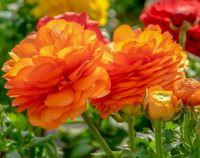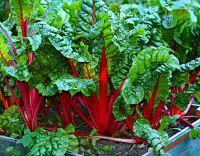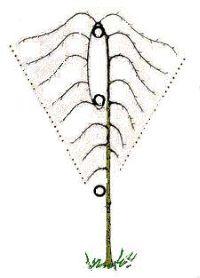November garden guide

Low water use plants need time to spread their roots before they become drought tolerant. The first year after planting they require regular water. That’s why November is an ideal time for planting – it’s the beginning of our rainy season.
This is the best time of year to plant California natives. There are nurseries that specialize in native plants, and more natives are making their way into other nurseries.
Be sure to do your homework to successfully plant your choice in the right location. Just because it is a native doesn’t necessarily mean it will thrive anywhere! Orange County has two main plant communities– coastal sage scrub and chaparral.
There are natives that prefer cool, wet places as well as drought tolerant ones. Some cannot stand water at all in the summer and will not tolerate being located by other plants that require weekly watering. Many natives will look their best with a little water during the hot months, so your success will depend on making sure to provide the optimum growing conditions.
Most natives require excellent drainage that is not typical in many yards. Amending the soil will be required in some cases or consider growing them on a hillside.
Some native plants that should be planted now are Mimulus hybridus (monkeyflower bush), Ceanothus (California lilac), Lavatera assurgentiflora (Califonia tree mallow), Salvia clevelandii (Cleveland sage) and Rhus integrifolia (Lemonade berry). For specific information consult Calscape where you can find native plants that grow well in your zip code.
Other low water use plants from different parts of the world also benefit from November planting. WUCOLS has a plant database that can be searched by city, water use, and type of plant.

Bulbs to plant this month are ranuculus, hyacinths, anemones, Dutch irises, and daffodils. Wait to plant tulip bulbs until you have refrigerated them for four to six weeks.

Stop deadheading and fertilizing for now. Decrease the amount of watering, but don’t let the roots dry out completely. Essentially, you are telling the roses it’s time to prepare for winter. This helps prepare for winter dormancy.

With the exception of chives, cool season vegetables are best planted from nursery starts in November. Leafy vegetables and brassicas grow well now. For more choices, check with A Year of Growing Vegetables.
Berries
Cane berries, such as blackberries, boysenberries, and loganberries should be pruned now.
Other than removing any broken canes or roots, little pruning is done in the first year, though plants should be trellised as soon as the canes are long enough to reach the trellis wire.
After the first year, pruning is done twice a year. The first pruning is in the winter. At this time, the lower side branches that are below the lower wire are removed. The laterals at the top of the trellis should be headed back to 12 to 15 inches. This will promote larger fruit by removing excess fruit wood.
The next pruning is done just after the harvest. After harvest those canes that have borne fruit are removed by cutting them down to the ground.
During the spring and early summer though, replacement canes are growing out of the crown. These new canes are gently bundled off to the side, where they will continue to grow until the harvest is complete.
After the harvest, the new canes that were growing from the base 
